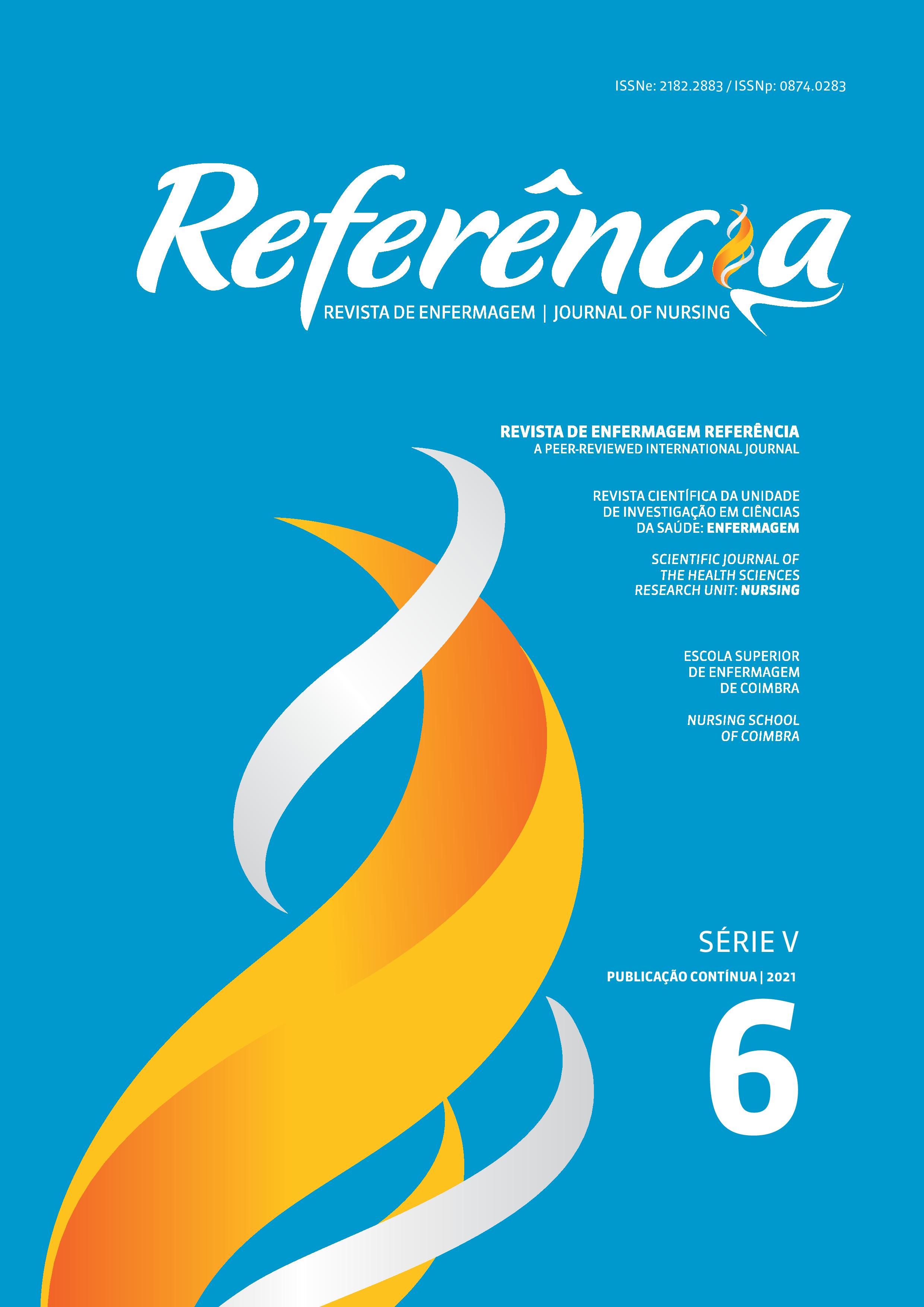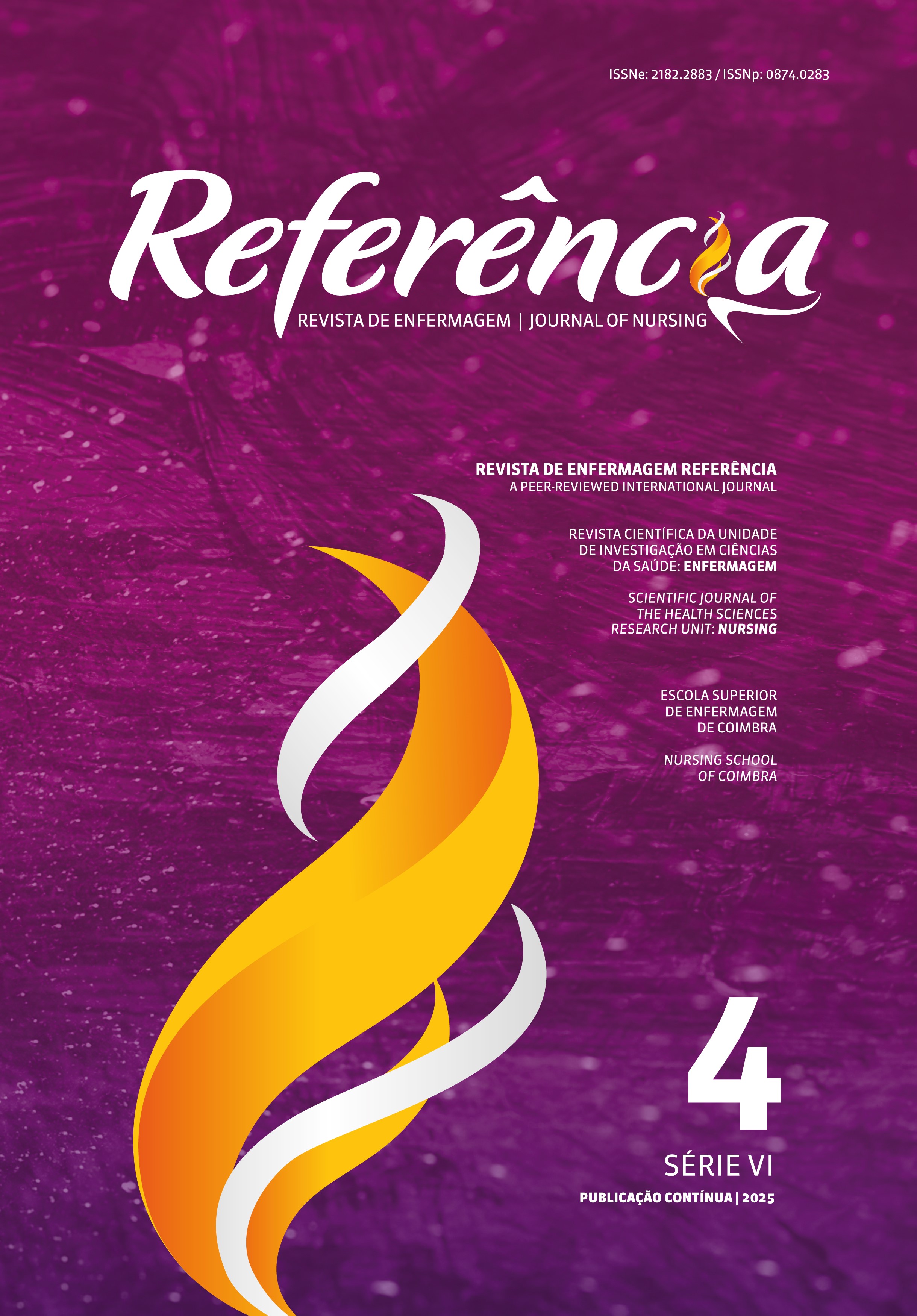Atitudes dos estudantes de enfermagem perante a morte e os cuidados em fim de vida
DOI:
https://doi.org/10.12707/RV20111Palavras-chave:
estudantes de enfermagem, morte, cuidados de enfermagem, atitude, atitude frente a morteResumo
Enquadramento: As vivências pessoais e em ensino clínico influenciam o modo como os estudantes de enfermagem lidam com a morte.
Objetivo: Avaliar as atitudes dos estudantes de enfermagem perante a morte e os cuidados em fim de vida.
Metodologia: Estudo descritivo. Os dados foram recolhidos através de um questionário online. Participaram 158 estudantes do curso de licenciatura em Enfermagem. Os dados quantitativos foram analisados com recurso ao programa IBM SPSS Statistics. Foram realizadas análises estatísticas descritivas e exploratórias dos dados através de testes paramétricos e não paramétricos.
Resultados: Os estudantes evidenciam maior proximidade com atitudes de neutralidade, medo e aproximação perante a morte e menos proximidade com atitudes de evitamento e escape. Relativamente aos cuidados em fim de vida, os estudantes que já realizaram ensino clínico apresentam atitudes positivas.
Conclusão: É importante utilizar metodologias de ensino/aprendizagem que permitam ao estudante expor as suas experiências com a morte e com os cuidados em fim de vida em ensino clínico.
Downloads
Referências
Benedetti, G., Oliveira, K., Oliveira, W., Sales, C. & Ferreira, P. (2013). Significado do processo morte/morrer para os acadêmicos ingressantes no curso de enfermagem. Revista Gaúcha Enfermagem, 34(1), 173-179. https://doi.org/10.1590/S1983-14472013000100022
Cardoso, L., Salgueiro, D., & Novais, S. (2017). Estamos preparados para desenvolver ações paliativas numa enfermaria? Revisão da Literatura. Revista Millenium, 2(3), 53-61. https://doi.org/10.29352/mill0203.06.00134
Cavaye, J., & Watts, J.H. (2014). An integrated literature review of death education in pre-registration nursing curricula: Key themes. International Journal of Palliative Care, 2014, 1-19. https://doi.org/10.1155/2014/564619
Edo-Gual, M., Tomás-Sábado, J., Gómez-Benito, J., Monforte-Royo, C., & Aradilla-Herrero, A. (2017). Spanish adaptation of the Frommelt Attitude Toward Care of the Dying Scale (FATCOD-S) in nursing undergraduates. OMEGA – Journal of Death and Dying, 78(2), 120-142. https://doi.org/10.1177/0030222816688294
Ferguson, R., & Cosby, P. (2017). Nursing students’ attitudes and experiences toward end-of-life care: A mixed methods study using simulation. Clinical Simulation in Nursing, 13(8), 343-346. https://doi.org/10.1016/j.ecns.2017.03.006.
Frommelt, K. H. (1991). The effects of death education on nurses’ attitudes toward caring for terminally ill persons and their families. The American Journal of Hospice and Palliative Care, 8(5), 37–43. https://doi.org/10.1177/104990919100800509
Gillan, P. C., van der Riet, P. J., & Jeong, S. (2014). End of life care education, past and present: A review of the literature. Nurse Education Today, 34(3). https://doi.org/10.1016/j.nedt.2013.06.009
Henoch, I., Melin-Johansson, C., Bergh, I., Strang, S., Ek, K., Hammarlund, K., Hagelin, C., Westin, L., Österlind, J., & Browall, M. (2017). Undergraduate nursing students’ attitudes and preparedness toward caring for dying persons: A longitudinal study. Nurse Education in Practice, 26, 12-20. https://doi.org/10.1016/j.nepr.2017.06.007
Instituto Nacional de Estatística. (2017). Estatísticas da Saúde 2017. https://www.ine.pt/xportal/xmain?xpid=INE&xpgid=ine_publicacoes&PUBLICACOESpub_boui=320460040&PUBLICACOESmodo=2
Iranmanesh, S., Savenstedt, S., & Abbaszadeh, A. (2008). Student nurses’ attitudes towards death and dying in south-east Iran. International Journal of Palliative Nursing, 14(5), 214-219. https://doi.org/10.12968/ijpn.2008.14.5.29488
Kopp, W., & Hanson, M. A. (2012). High-fidelity and gaming simulations enhance nursing education in end-of-life care. Clinical Simulation in Nursing, 8(3), 97-102. https://doi.org/10.1016/j.ecns.2010.07.005
Lima, R., Bergold, L., Souza, J., Barbosa, G. & Ferreira, M. (2017). Death education: sensibility for caregiving.. Revista Brasileira de Enfermagem, 71(4), 1884-1889. https://doi.org/10.1590/0034-7167-2017-0018
Loureiro, L. (2010). Tradução e adaptação da versão revista da Escala de Avaliação do Perfil de Atitudes acerca da Morte (EAPAM). Revista de Enfermagem Referência, 3(1),101-108. https://doi.org/10.12707/RII1012
Oliveira, E., Agra, G., Morais, M., Feitosa, I., Gouveia, B. & Costa, M. (2016). The process of death and dying in nursing students’ perception. Journal of Nursing, 10(5), 1709-1716. https://doi.org/10.5205/relou.9003-78704-1-SM.1005201617
Sampaio, A., Comassetto, I., Faro, A., Dos Santos, R. & Monteiro, F. (2015). The experience of nursing students facing death and dying. Investigación y Educación en Enfermería, 33(2), 305-314. https://doi.org/10.17533/udea.iee.v33n2a13
Serra, S. (2012). Morrer na presença de quem cuida: Atitudes do enfermeiro de cuidados diferenciados face à morte e aos cuidados ao doente em fim-de-vida. [Dissertação de mestrado, Faculdade de Medicina da Universidade do Porto]. https://repositorio-aberto.up.pt/bitstream/10216/72951/2/29203.pdf
Sousa, L., Carvalho, M., Veludo, F., José, H. & Marques-Vieira, C. (2015). Fidelidade e validade na construção e adequação de instrumentos de medida. Revista Enformação, 5, 25-32
Wang, Y. (2019). Nursing students’ experiences of caring for dying patients and their families: A systematic review and meta-synthesis. Frontiers of Nursing, 4, 261-272. https://doi.org/10.2478/FON-2019-0042
Ward, E. (2017). Nursing students’ knowledge and attitudes toward care of the dying [Dissertação de doutoramento, College of Health and Human Service, Georgia]. https://digitalcommons.kennesaw.edu/cgi/viewcontent.cgi?article=1006&context=dns_etd
Wong, P. T., Reker, G. T., & Gesser, G. (1994). Death Attitude Profile – Revised: A multidimensional measure of attitudes toward death (DAP-R). In R. A. Neimeyer (Ed.), Death anxiety handbook: Research, instrumentation, and application (pp. 121-148). Taylor & Francis






















